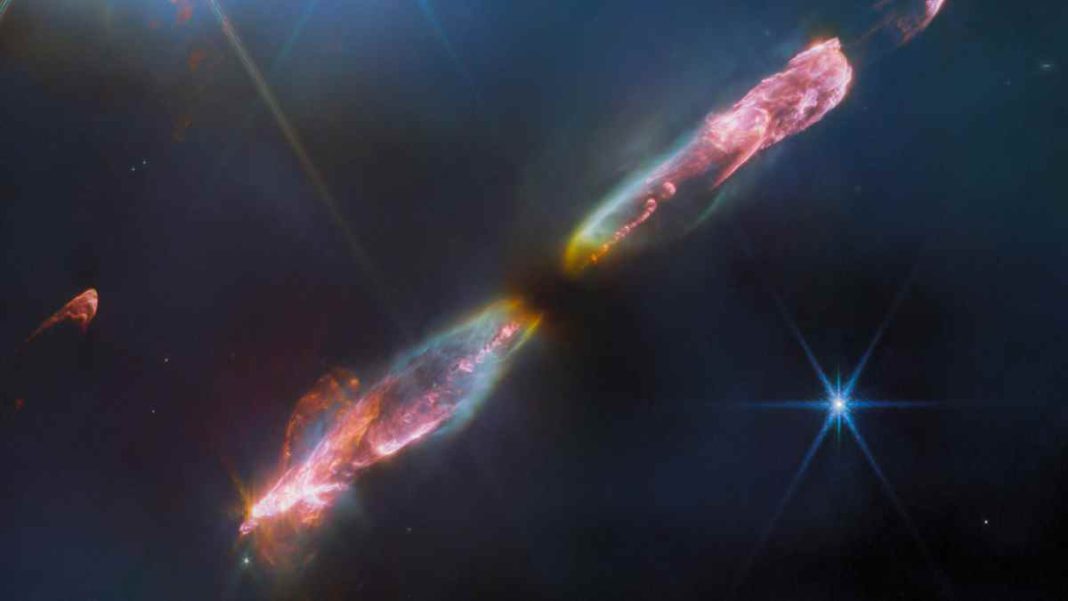UNITED STATES: NASA’s James Webb Space Telescope has unveiled another unprecedented image capturing the moments immediately following the birth of a young sun. This remarkable image offers an extraordinary glimpse into the early stages of a celestial life cycle and showcases the unparalleled capabilities of the world’s most powerful space observatory.
The star of this celestial show is the Herbig-Haro (HH) object, HH 211. These luminous regions surround newborn stars and are formed when jets of gas emitted by these nascent stars collide with nearby gas and dust at breakneck speeds. HH 211 provides a window into the past, depicting a protostar that bears a striking resemblance to our own Sun when it was just a few tens of thousands of years old and possessed a mere 8% of its present-day mass.
This infantile protostar, nestled within the molecular cloud from which it originated, will eventually evolve into a mature star similar to our Sun. To capture this momentous image, researchers heavily relied on infrared imaging. Infrared emissions penetrate the obscuring shroud of gas and dust that envelops these young stars, making objects like HH 211 ideal subjects for Webb’s sensitive infrared instruments.
The image itself reveals a mesmerizing series of bow shocks extending to the southeast and northwest, powered by a narrow bipolar jet emanating from the protostar. Webb’s high-resolution imaging capabilities provide a spatial resolution 5 to 10 times greater than any previous HH 211 images. Remarkably, the inner jet appears to exhibit symmetrical wiggles on both sides of the central protostar, hinting at the possibility that the protostar may be an unresolved binary star system.
One of the key findings of this research is the determination that the object’s outflow is relatively slow when compared to more mature protostars with similar outflows. The innermost outflow structures were measured to have velocities ranging from 48 to 60 miles per second.
However, the difference in velocity between these outflows and the leading shockwave they collide with is significantly smaller. This has led researchers to conclude that the outflows from the youngest stars, such as the one at the heart of HH 211, consist mostly of molecules. The relatively low shockwave velocities are insufficient to break these molecules into simpler atoms and ions.
The implications of this discovery are profound, as it sheds new light on the early stages of star formation and the molecular compositions of outflows from protostars. The James Webb Space Telescope continues to unravel mysteries within our solar system, explore distant exoplanets orbiting other stars, and delve into the enigmatic structures and origins of our vast universe.
Also Read: GAO Audit Urges NASA Transparency on SLS Rocket Costs amidst Budget Concerns



